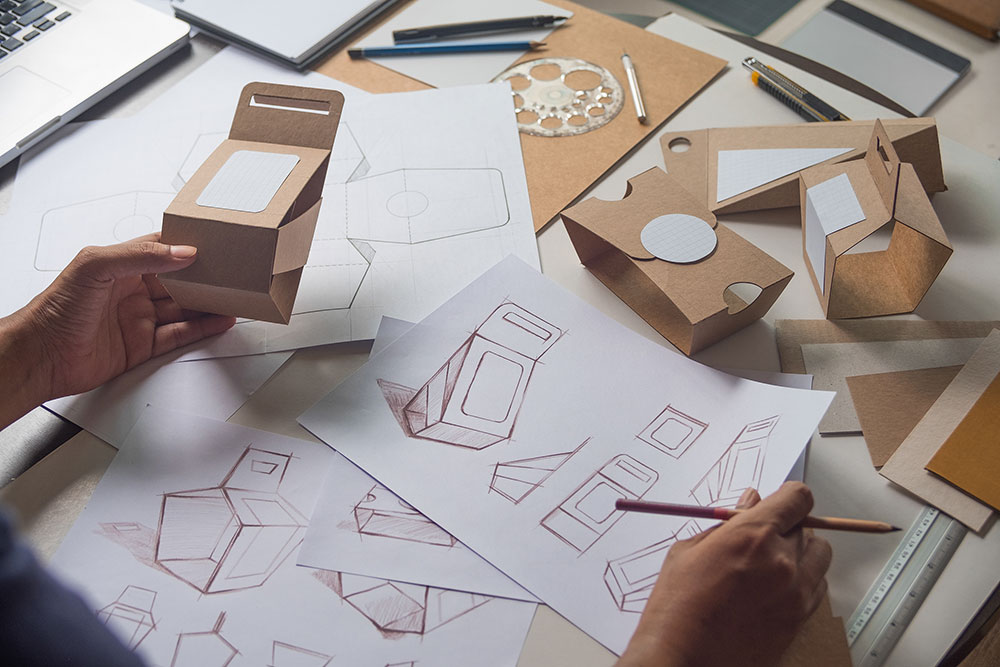
Tips For Designing The Packaging That Contains Your Products
There was a time when product packaging was just that—a packaging. But while its primary function is to wrap and keep products clean and intact, it has evolved into something more. Your product container represents your brand. It's your identity in the middle of the immeasurable sea of commerce and it can spell your business success or failure.
In addition, just as society evolved, so did packaging design. A good example would be the impact of the growing call for environmental protection and garbage reduction in many parts of the world. This has kick-started a trend where packaging materials are designed to have other uses or benefits.
The coffee dispensing can, for instance, reduces the steps one needs to perform to make coffee and that's on top of protecting its contents. The dispenser feature makes it easy for users – your customers – to make coffee without opening the canister every time they make a brew. It also prevents the use of a wet spoon which can spoil the coffee powder inside.
In short, designing the packaging for your product is not something that you put on the backburner. On the contrary, it requires creativity and innovation. Here are some tips.
1. Begin and End with Your Product in Mind
When designing the packaging for your goods, always consider the type of product you're selling. Your design choices will be affected largely by the form of your product. Is it solid, liquid, or even gas? Is your product food or a drink or is it not for human consumption?
Each of these categories will require different packaging requirements. If you're selling shampoos, then you will have a different packaging specification than that of an enterprise selling milk teas.
2. Know Your Market
It may not be that obvious, but your customers play an important role in your product packaging design. The material that you'll use to put your product in will cost money, which in turn will affect your pricing.
There are many types of market segmentation that you need to consider. Chief among these is the income level of your customer demographics. If your target consumers belong to upper-income level households, then you may need to add luxury to your packaging.
3. Be Clear About Your Brand Identity
You know your product and you know your target market. Now, it's time to take a look in the proverbial mirror and get to know your brand identity. How would you want your product to appear in the market?
Your brand philosophy will weigh heavily on your design decisions, from the color to the shape and size of your packaging. Your brand should be consistent with your product container, otherwise, you'll confuse your target customers.
Remember, your packaging is often the only way for people to get to know you and your product. If you play your cards right, your product will gain brand awareness among your customer base. When that happens, your business will soar.
4. Design within Your Means
Your packaging is more than just wrapping material to contain your product. It also serves as a protection and marketing tool for your merchandise. With that in mind, you would naturally want the best product packaging for your goods.
But again, product packaging costs money. If you're selling paper clips that are normally sold for cents per box, then you might want to stick to cheap paperboard packaging with simple or even bare graphics. Things would be different if you're selling fine gold-plated pens. For that, you will need to spend more on luxurious packaging to attract more customers.
Always make sure that your budget will not eat up a lot of your profit margin, but do not sacrifice quality and your brand image.
5. Take Your Packaging for a Spin… In the Real World
For the most part, product packaging design happens at the office desk or boardroom. With all the 3D design software available now, conceptualization is fast, easy, even automated in some aspects. Companies like The Packaging People have creative graphic designers who can personalize your product container design. But when all is said and done, a computer-generated design or drawing is not enough when coming up with your product container.
After conceptualization, it is important to have an actual market test of your goods in their new packaging. Have a limited test run of your product before going all-in for full production. Here are some questions to ask yourself:
- Does your newly designed packaging meet your expectations?
- How are your target customers reacting to your new product wrapper?
- Is your product occupying a lot of shelf space because of the packaging?
- Are merchandisers able to handle your product easily with the new container design?
Since you're only doing a limited test run, you can always go back to the drawing board and tweak your new design. That's still economically cheaper compared to launching in the market with an untested packaging design.







